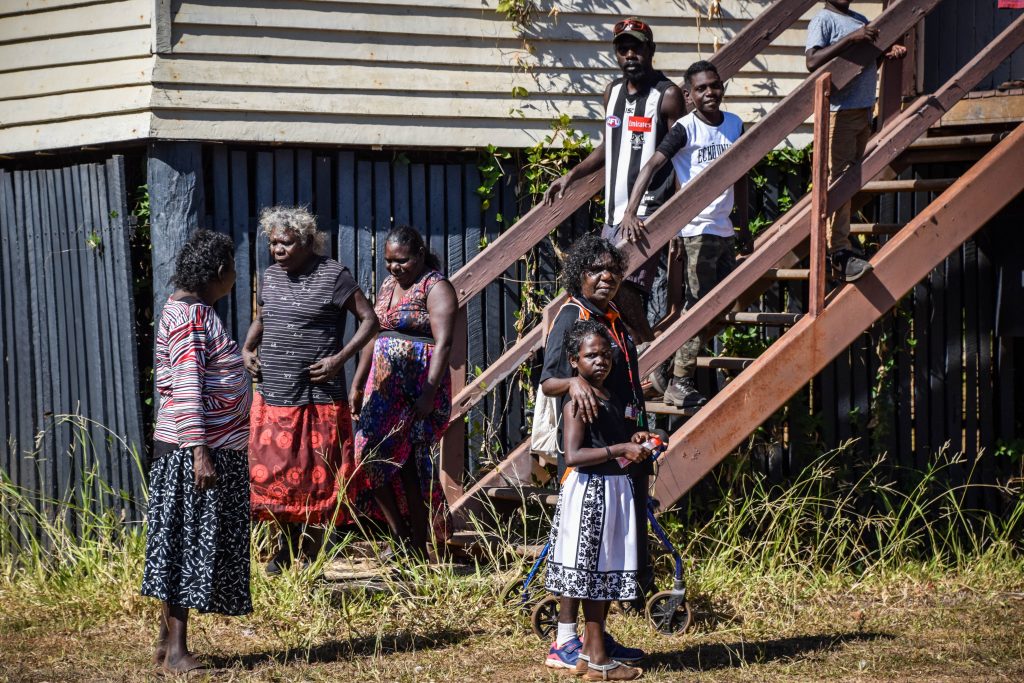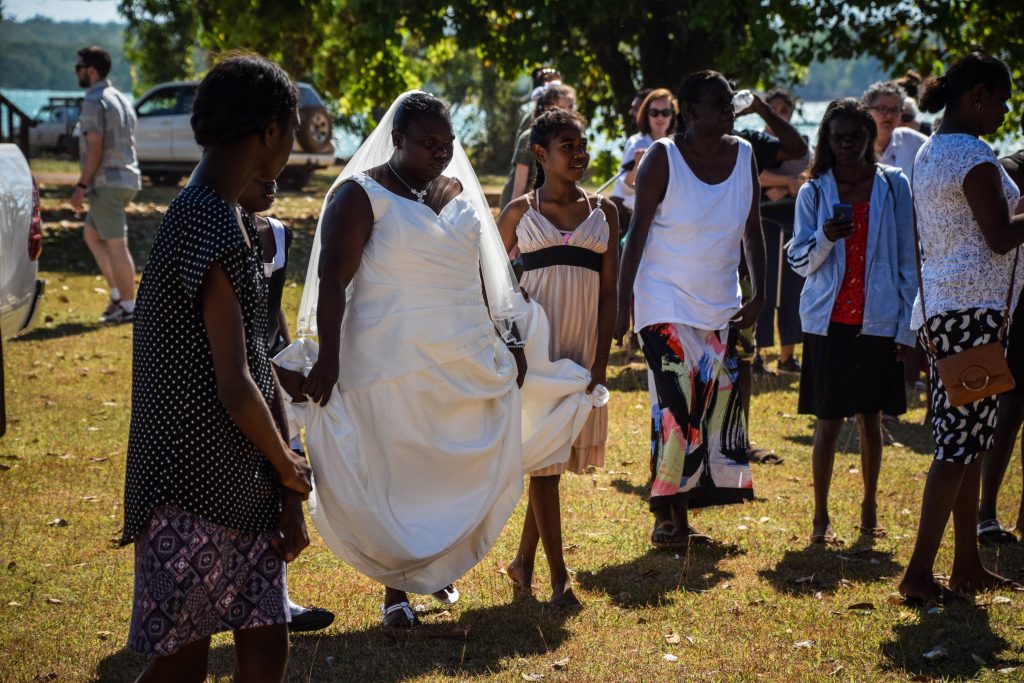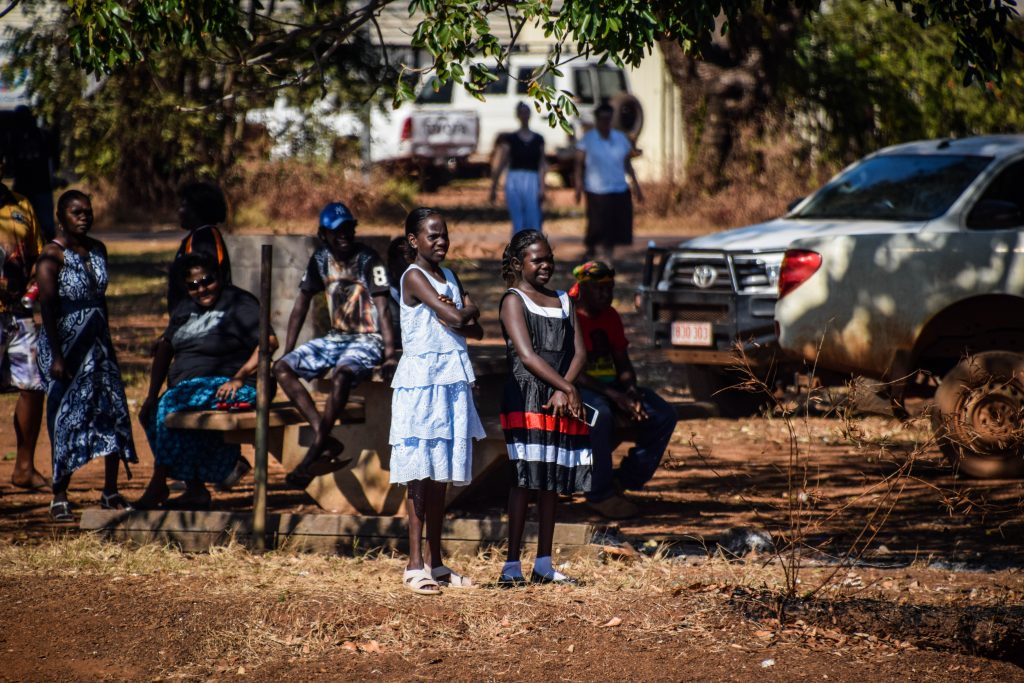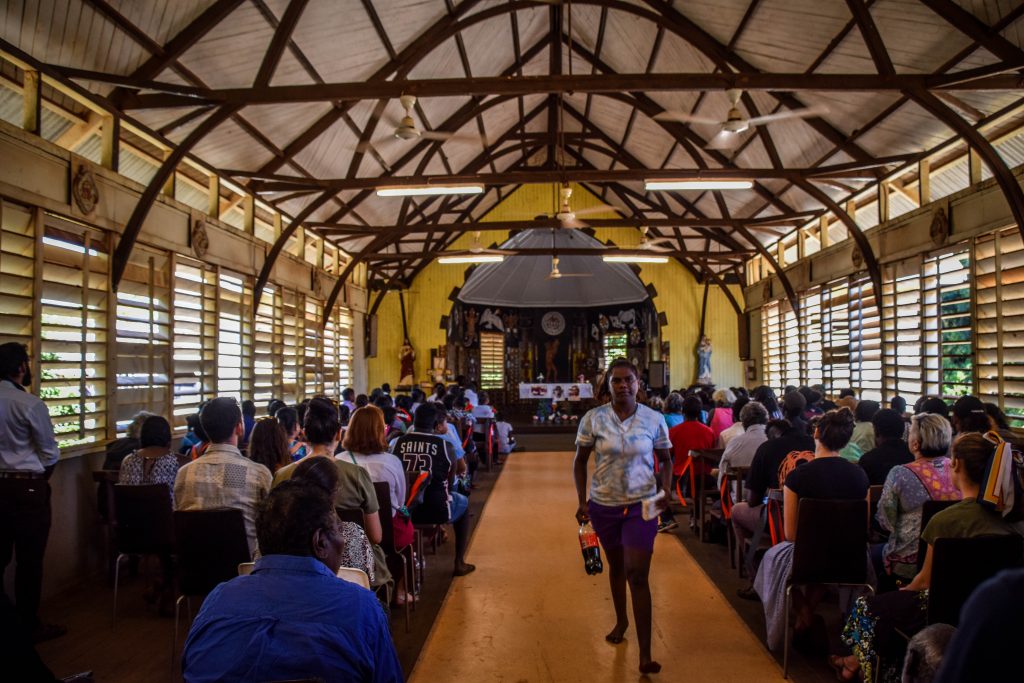The Tiwi Islands, known as ‘the islands of smiles’, are definitely off the beaten track for tourists visiting Northern Territory. The main settlements are on Melville and Bathurst Islands, located around 80 km off the coast from Darwin where the Timor and Arafura seas meet. Other 9 islands are much smaller. The population size is around 2500 people, nearly 90% of whom are Aboriginal.
It is believed that Aboriginal people have lived in the area known today as Tiwi Island for at least 40,000 years.
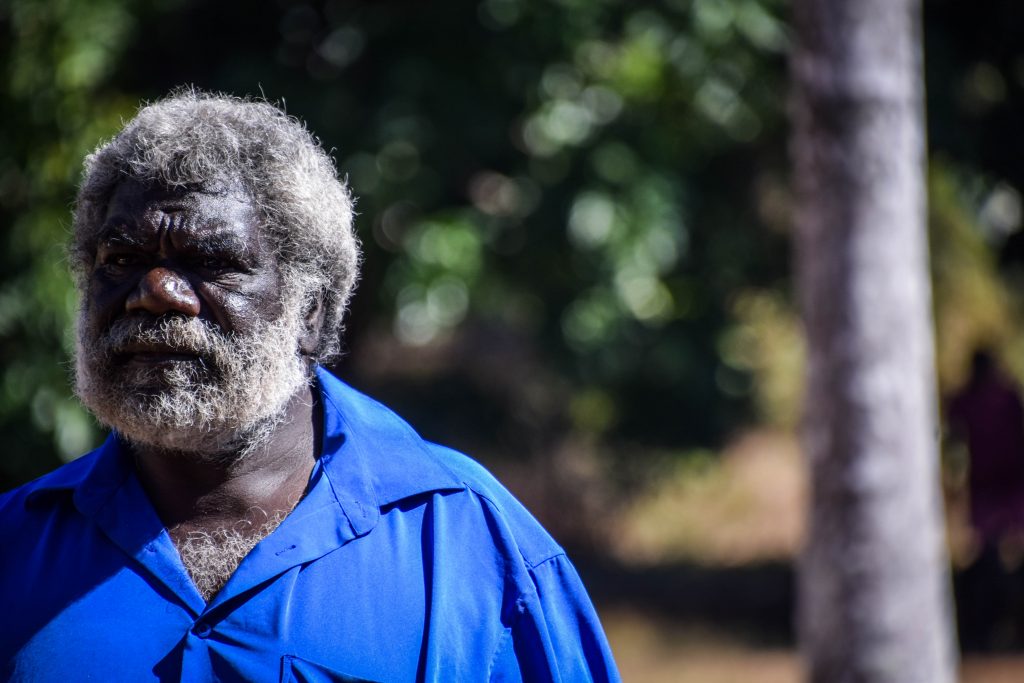
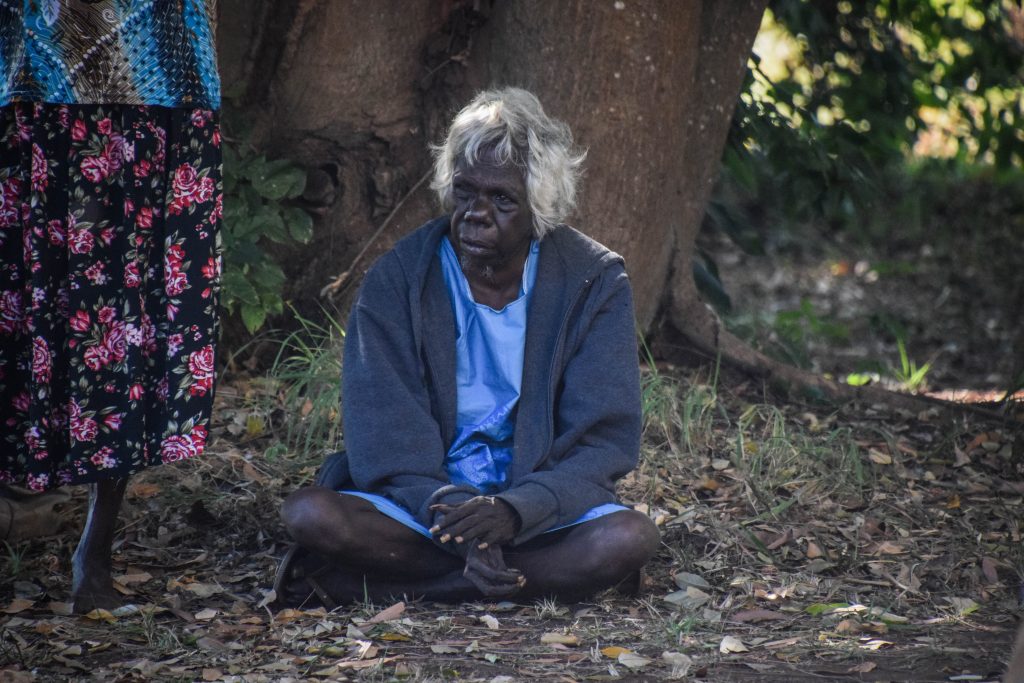
First European settlement (British) was established in 1824 but lasted only 5 years due to hostilities. in 1910 the whole Bathurst Island was declared as Aboriginal reserve and Catholic missionaries moved in. Needless to say, it had a significant impact on local culture and created an interesting mix that exists nowhere else in Australia. The traditional church can still be seen in Wurrumiyanga, just next to the ferry pier.
The islands were handed back to the Indigenous owners and today are governed by Tiwi Islands Land Council.
How to get there?
Visiting the Tiwi Islands and going anywhere further than the main settlement Wurrumiyanga at Bathurst Island requires a permit from the Tiwi Islands Land Council and rather isn’t popular among tourists.
Therefore, the best way is to go for a full-day tour or just buy a return ticket for the ferry operated by SeaLink and go independently. A permit is not needed in such cases. Obviously, I opted for the second option and it was great, though to fully learn about Aboriginal culture, a local guide would be beneficial.
Ferry tickets cost 60 AUD one way while organized tours can cost between 190 AUD to 350 AUD.
Ferry travel time is 2.5 hours each way. Check SeaLink schedule as they don’t go every day (at the time of writing it is Thursday, Friday and Sunday).
The ferry leaves Darwin at 11:15 am and departs on the way back at 3:15 pm so you will have less than 2 hours at the island. That’s not much, but enough to get the feeling of this community and have a walk around to visit art galleries and museum.
Much more expensive alternative is taking a flight. It takes 30 min to get to Bathurst Island from Darwin but it comes with the price of 175 AUD one way.
Art & Culture
Aboriginal people living on the island are known for their unique arts and crafts scene. It’s a perfect place to purchase souvenirs and items to decorate your home: pottery, wood carvings, pained shells but also textiles and clothing.
There are three art centres, museum, the old Catholic mission precinct and Pukamani (burial) poles in the cemetery, all within walking distance in Wurrumiyanga.
Patakijiyali Culture Museum
Amazing place to dive into thousands of years old and rich Aboriginal culture. Beautifully crafted rooms display traditional art and sculptures depicting Dreamtime stories as well as old photographs, history of Catholic mission, WWII times, local athletes, flora and fauna that can be found on the islands.
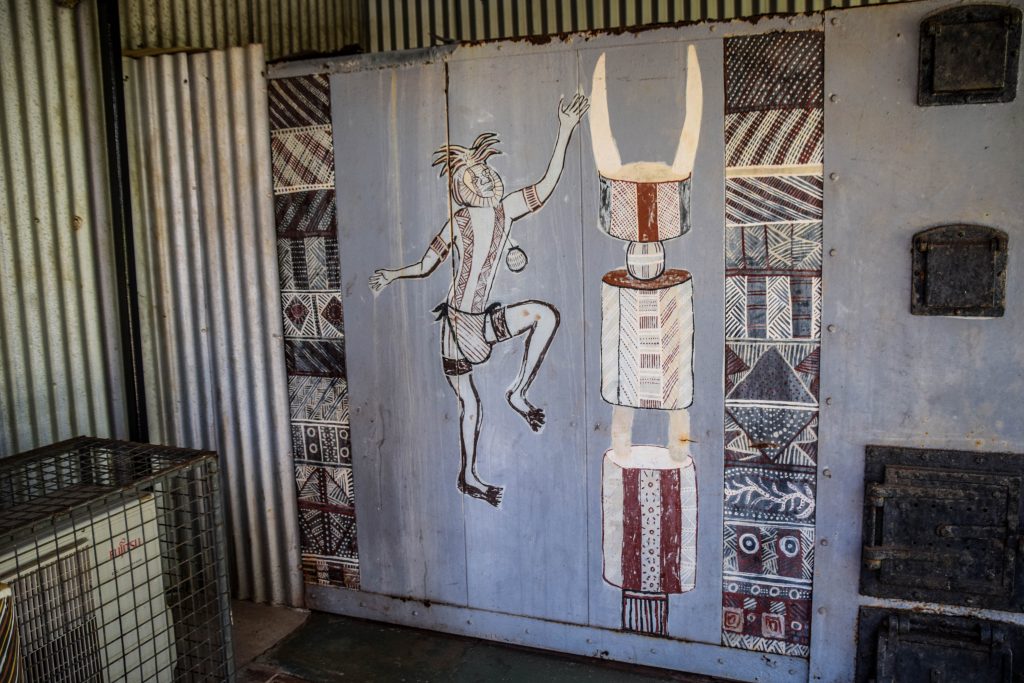
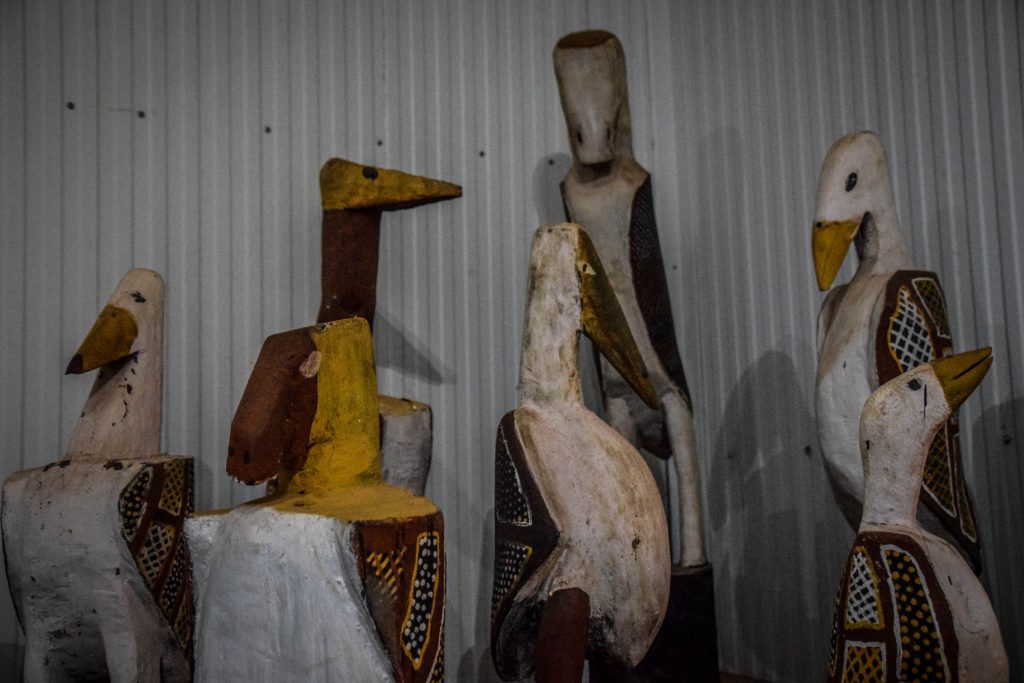
Tiwi Design
They produce ochre paintings on canvas and bark, ironwood carvings, screen-printed fabrics, ceramics and bronze and glass sculptures.
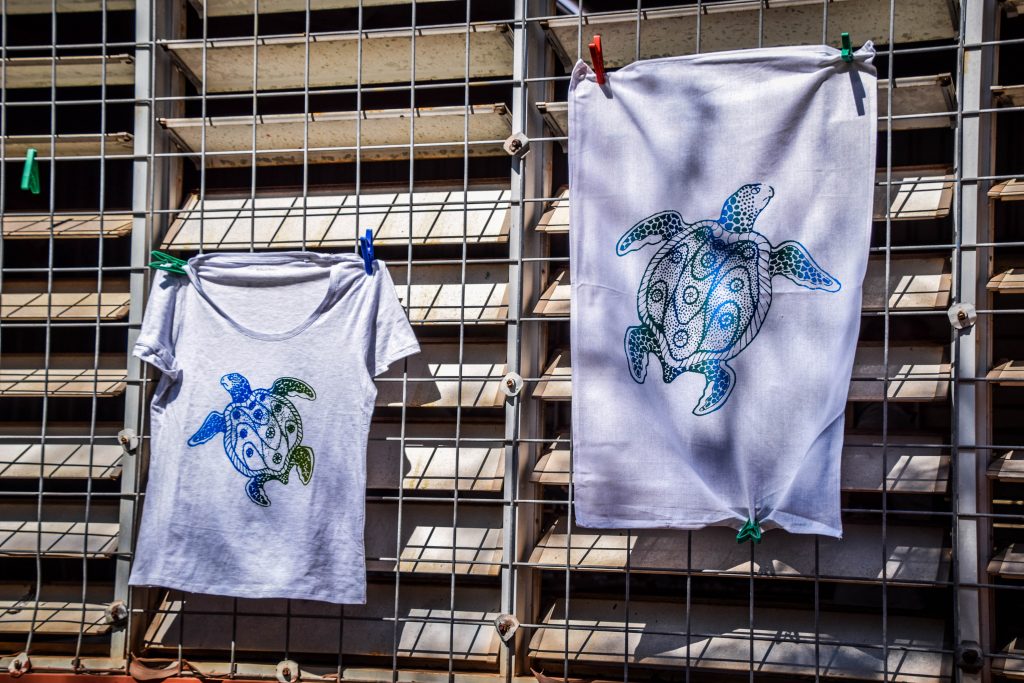
Traditional Church
When I’m there, the place is full of worshippers, guests, curious tourists…and dogs cheerfully running around everyone. The wedding was about to take place. It looked like a big deal as the whole village gathered here to celebrate. Art centres were temporarily closed and the museum was open but left without any supervision.
It was definitely the highlight of my trip to Bathurst Island and an amazing opportunity to take great photographies of the people. Moreover, I felt very welcome in the Aboriginal community.
Nguiu Catholic Church Precinct
The Catholic Church precinct was established by Bishop Francis Xavier Gsell MSC in 1940. It includes timber made buildings such as St Therese’s Church, Presbytery and a radio shack.
Cemetery & Pukamani poles
Pukumani poles (also known as tutini) are made from carved wood and painted with natural pigments presenting a deceased person’s life and spiritual journey. Then, they are placed around the burial site as it is believed that the spirit may be present near the body. Rituals involving dance, music, and art are performed at the gravesite to guide the spirit into the afterworld. Painted lines and dots are also applied to the bodies of the living to make them invisible for the spirit. After the ceremony, the burial poles are left to decay.
The ritual originates from the Dreamtime story of Purrukapali and explains how death appeared in Tiwi culture through love, betrayal and rage.
Purrukapali had a wife named Bima and a son named Jinani. One day Bima left their son under the shade of a tree so she could spend some time alone with her lover, Purrukapali’s brother. Unfortunately, the time was passing fast and the shade disappeared leaving young Jinani exposed to the burning sun and imminent death.
Purukaparli was so devastated that he attacked and wounded his brother who flew into the sky and became the moon. Then, he took up his son and carried him in his arms as he walked into the sea towards his own death. At this moment, he declared that no one would avoid death. Bima became the curlew bird, whose wailing cries can be heard at night.
Football mania
Australian rules football was introduced by missionaries and it’s definitely the most popular sport on the islands. Every March, Tiwi Islands Football League final is celebrated at Wurrumiyanga on Bathurst Island which brings thousands of spectators. The teams compete during the wet season, from October to March.
Was it worth coming?
Definitely yes. Even though my time on the island was very limited by the ferry schedule, I had the chance to get to know Aboriginal culture even more and understand their art and beliefs. Without doubts, the highlight was the wedding, where I could see the whole village gathering to celebrate together. Due to the isolation from mainland Australia, the community is bonded together and such events make it very visible.




